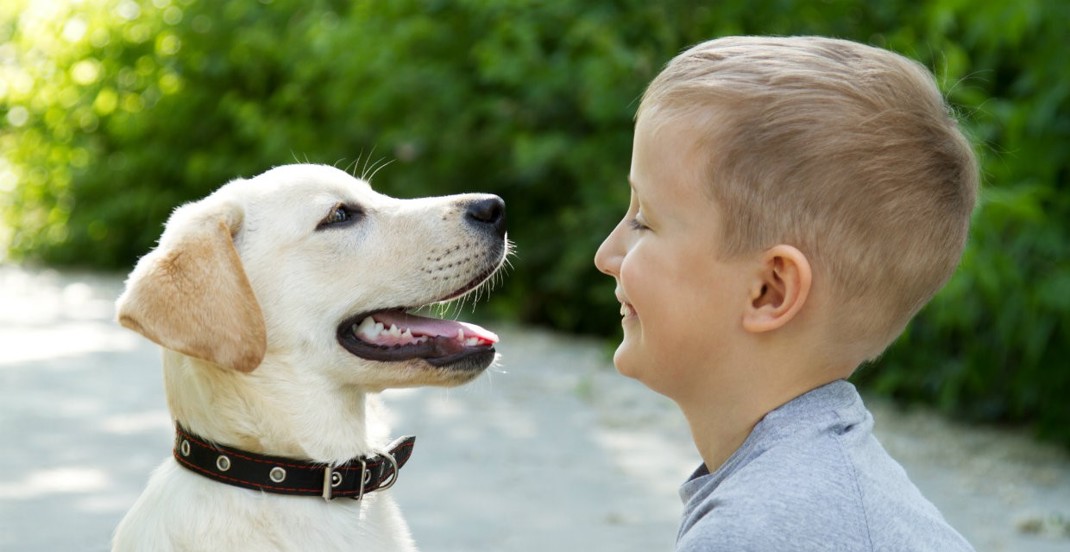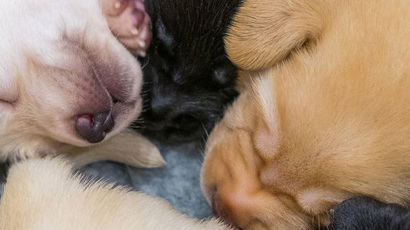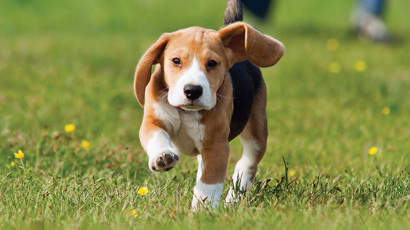Puppy Hygiene and Safety Around the Home

Bringing your new puppy home for the first time can be daunting, as they naturally explore their new environment. Here are some helpful hints to help your new puppy and your family remain safe during puppy-hood.
Puppy-proofing your home
If your puppy is at home with you, it is best to avoid him or her being allowed free access to all parts of the home unsupervised and instead have a designated area of the house where it is safe for the puppy to explore, similar to a crawling baby.
Before you bring your puppy home, it is a good idea to set up a safe area for your puppy within the living area of the house as it is not always possible to supervise your puppy 24/7.
A safe space consists of a play pen or cordoned-off escape-proof area with food, water, an indoor toileting area and soft, durable bedding.
It can be helpful to use this space if while you are cooking, working from home or hanging out the washing, to avoid your puppy getting into a potentially dangerous situation.
Setting up an indoor puppy pen:
- Secure a pen or small room that they cannot climb or jump out of
- Include a toileting area (preferably real grass turf e.g. Fresh Patch or Potty Plant brands)
- Put a puppy bed at the opposite end of the toileting area
- Choose two toys such as a rubber chew toy such as these, and another toy not recently played with e.g. a soft comfort toy
- Provide a freshly-filled water bowl
Around the home it is important not to leave items on the floor that could be dangerous to your puppy if chewed or swallowed, such as children’s toys, clothing or electrical wires.
Garbage bins should be either in a kitchen cupboard, or have a firm lid that prevents the puppy accessing it.
Safety in the garden
Your puppy can explore your backyard while supervised, but ensure that the yard is free from seed pods, pebbles, sticks or plants (e.g. Brunfelsia pauciflora, commonly known as the Yesterday Today Tomorrow plant) that could be hazardous if swallowed.
It’s important to ensure your puppy’s environmental is free from other toxins such as rat and snail baits which are not safe for pets.
Dogs have a very wide oesophagus which allows them to swallow food and potentially objects in a hurry but their digestive tract cannot always handle it, meaning that they are at risk of a foreign body obstruction. So, walk around the garden with your puppy but observe him or her closely during this important puppy exploration phase.
Toxic foods
The 5 common toxic foods for your puppy to avoid are:
|
Foods toxic to dogs |
Signs if ingested |
|
Chocolate |
Vomiting, diarrhoea, tremors, seizures due to theobromine found in chocolate |
|
Onion |
Weakness and pale gums due to anaemia from red blood cell destruction |
|
Macadamia nuts |
Incoordination and neurological signs |
|
Grapes/sultanas/raisins |
Kidney failure |
|
Xylitol (sweetener, found in some gums and peanut butter, for example) |
Low blood sugar, seizures, or liver failure |
If your puppy ingests any of the items above, then please contact your veterinarian for advice as some of these toxins are life-threatening.
Puppy hygiene for your family
Besides keeping your puppy safe, it is important to also keep your family safe from parasites and bacteria that can be potentially transmitted from dogs to humans.
Intestinal worming
Puppies should be dewormed every 2 weeks until 12 weeks of age, then monthly until 6 months of age, then every 3 months for life (6 weekly for dogs visiting or living on farms).
Children are susceptible to roundworm (Toxocara canis) and hookworm infection (Anyclostoma caninum), which is commonly carried by young puppies who have not been regularly wormed. As humans are not the natural host for this parasite, the parasite migrates through the body in an unusual pattern, which can risk serious consequences such as blindness1.
Hydatid tapeworm (Echinococcus granulosus) is a parasite that can infect humans if your dog has access to raw offal, which may inadvertently be found in raw pet food or livestock/kangaroo carcasses. It is important to ensure that your intestinal worming product specifies that it includes a tapewormer (active ingredient is praziquantel). Some of the products are incomplete and an additional tapewormer is required to cover for this. Ask your veterinarian for advice on complete parasite control to keep your puppy and your family safe2.
Hand hygiene & licking
As part of managing your puppy’s hygiene with your your family, it’s important that family members wash their hands after handling the puppy, particularly before meals. This helps prevent transmission of parasites and bacteria from the puppy to humans within your household. This includes discouraging puppies from directly licking your face, as your dog may have recently licked his or her bottom!
Toileting
Toilet training your puppy can be a messy business and particularly unhygienic if your puppy has free access to all parts of the house. Generally, puppies are still learning to control their wees and poos until up to 6 months of age. So, try not to expect too much too soon as you might be disappointed. It’s important to use gloves or a plastic bag to pick up faeces from the back yard or within your home and remove it promptly, then wash hands after handling waste. Try to direct your puppy to specific spots in the garden or use an indoor toileting spot and be consistent with rewards and praise. Avoid punishing your puppy as this will lead to anxiety around toileting.
Avoid punishing your puppy as this will lead to anxiety around toileting.
Leptospirosis
Puppy parents may have heard about Leptospirosis, a serious bacterial infection causing liver and kidney disease that can affect both pets and humans in certain parts of Australia. Transmission depends on the type, but dogs may become infected from environments contaminated with infected rat urine, eating or getting bitten by an infected rat or via urine from infected livestock (e.g. dairy farms, pig farms). The disease is more common in regions where there is high rainfall as well as inner-city areas with heavy rat populations3. Remember to discuss the risks of Leptospirosis with your local veterinarian to see if it is a problem in your area as this is a disease that can be vaccinated against if required.
Bringing a new dog into the household is a wonderful experience, but it does take some preparation.
So, it’s best to be prepared for your puppy’s arrival into your home with a plan in place and to also be familiar with puppy hygiene to keep your family safe too.
References:
- Traversa D. Pet roundworms and hookworms: A continuing need for global worming. Parasite Vectors. 2012;5:91.
- King S, Hutchinson G. Hydatids – you, too, can be affected. NSW DPI Primefacts. 2007;475.
- Effler P. Leptospirosis: key things to know about this quintessential zoonotic pathogen. Microbiology Australia 2020; 41:19-22.



